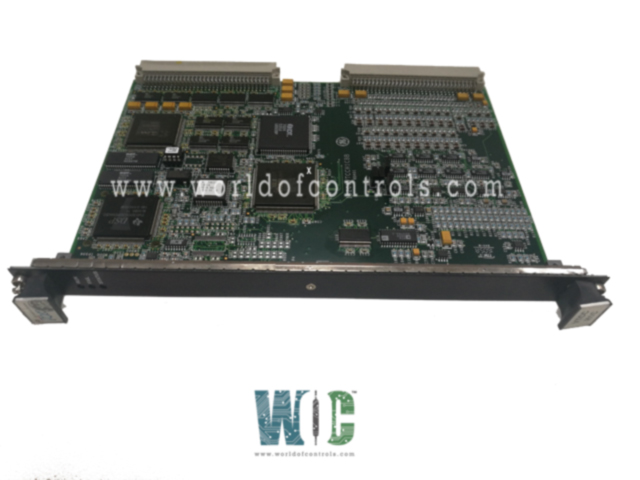SPECIFICATIONS
Part No.: IS200VTCCH1CBD
Manufacturer: General Electric
Country of Manufacture: United States of America (USA)
Number of channels: 24
Thermocouple types: E, J, K, S, T
Span: -8 mV to +45 mV
Temperature: -30 to +65 oC
Product Type: Thermocouple Processor Board
Availability: In Stock
Series: Mark VI
Functional Description
IS200VTCCH1CBD is a thermocouple processor board developed by GE. It is a part of Mark VI control system. The Thermocouple Processor Board VTCC serves as a pivotal component within thermocouple-based control systems, providing crucial functionality in processing and interpreting data from diverse thermocouple inputs. Designed with versatility in mind, the VTCC accommodates up to 24 thermocouple inputs of types E, J, K, S (see note), or T, ensuring compatibility with a wide range of thermocouple configurations and applications.
Input Compatibility
- The flexibility extends to its compatibility with various thermocouple types, including E, J, K, S, and T.
- This comprehensive acceptance of thermocouple types underscores its adaptability to different temperature measurement requirements across industries and applications.
- Whether monitoring high-temperature processes or conducting precise temperature control in laboratory settings, the VTCC reliably processes data from a diverse array of thermocouples with accuracy and efficiency.
Terminal Board Connection
- Facilitating seamless integration, the VTCC connects to the terminal board TBTC, where the thermocouple inputs are wired to two terminal blocks. This structured connection mechanism streamlines the installation process and ensures a secure and organized interface between the thermocouples and the component.
- By consolidating the wiring onto the terminal board, potential points of failure are minimized, enhancing the reliability and durability of the overall system.
Cable Connection
- The connectivity between the terminal board and the VME rack, where the thermocouple processor board resides, is established through cables equipped with molded plugs. These cables provide a robust and dependable link, maintaining signal integrity and minimizing the risk of signal interference or loss.
- The molded plug design ensures a secure connection, reducing the likelihood of accidental disconnections or disruptions in data transmission.
- This structured cable connection further enhances the efficiency and stability of the VTCC system, facilitating seamless communication between the thermocouple inputs and the processing unit.
Other Features
- Measurement Accuracy: The Thermocouple Processor Board boasts an impressive measurement accuracy of 53 mV, excluding the cold junction reading. This exceptional level of accuracy ensures precise temperature readings, essential for applications requiring meticulous control and monitoring.
- Example: Temperature Accuracy: For instance, when utilizing a type K thermocouple, delivers a remarkable accuracy of 3 oF, even at high temperatures such as 1000 °F. This accuracy is achieved while factoring in the cold junction contribution through the Root Sum Square (RSS) method, ensuring reliable and consistent temperature measurements across a broad spectrum of operating conditions.
- Common Mode Rejection: Features remarkable common mode rejection capabilities, with an AC common mode rejection of 110 dB at 50/60 Hz for balanced impedance input configurations. This high level of rejection effectively mitigates unwanted noise and interference, ensuring that the processed data remains accurate and unaffected by external electrical disturbances.
- Common Mode Voltage: With a common mode voltage tolerance of ±5 V, demonstrates robust resilience to variations in common mode voltage levels. This feature enhances the board's reliability in diverse operating environments, safeguarding against potential voltage fluctuations that could compromise measurement accuracy.
- Normal Mode Rejection: Offers impressive normal mode rejection capabilities, with a rejection of 250 mV rms achieving 80 dB attenuation at 50/60 Hz. This capability ensures that the board effectively filters out noise and interference originating from within the system itself, maintaining the integrity of the measured signals and enhancing overall accuracy.
- Scan Time: To ensure timely and responsive data acquisition, all inputs are sampled at a rapid rate of 120 times per second for 60 Hz operation, and 100 times per second for 50 Hz operation. This swift scan time guarantees real-time monitoring and control, enabling swift detection and response to temperature variations, thereby optimizing system performance and reliability.
The WOC team is always available to help you with your Mark VI requirements. For more information, please contact WOC.
Frequently Asked Questions
What is IS200VTCCH1CBD?
It is a thermocouple processor board developed by GE under the Mark VI series.
What is the purpose of hardware limit checking for thermocouple inputs?
Hardware limit checking ensures that thermocouple inputs remain within specified high and low levels near the operating range's ends. If these limits are exceeded, a logic signal is triggered, and the input is no longer scanned, helping to prevent erroneous data.
How does the processor handle system limit checking for thermocouple inputs?
The board allows for configurable high and low levels for system limit checking on each thermocouple input. These limits can be adjusted for alarms and enable/disable functionality, enhancing flexibility in monitoring temperature levels.
What role does TMR play in the system, and how does it detect faults?
In TMR systems, deviations from the voted value (median value) beyond a predetermined limit signal a fault. This feature provides early detection of potential issues in individual channels, ensuring system reliability.
How are terminal boards and I/O boards identified within the VTCC system?
Each terminal and I/O board is uniquely identified through an ID device containing serial numbers, board types, revision numbers, and connector locations. Mismatches between expected and read data trigger hardware incompatibility faults, maintaining system integrity.
